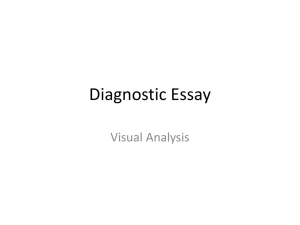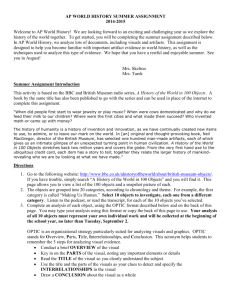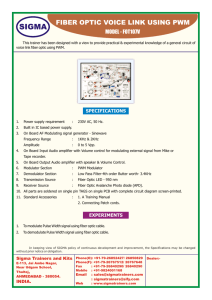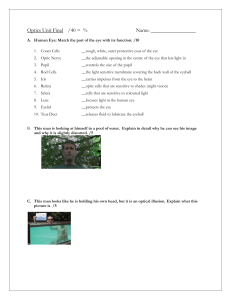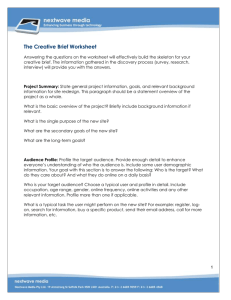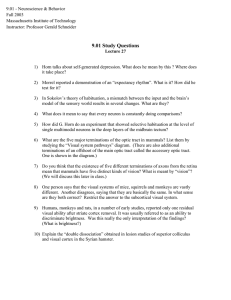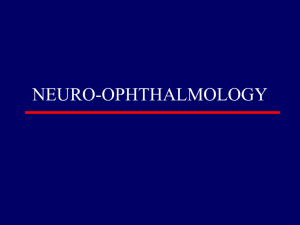Analyzing Visual Texts Using OPTIC
advertisement
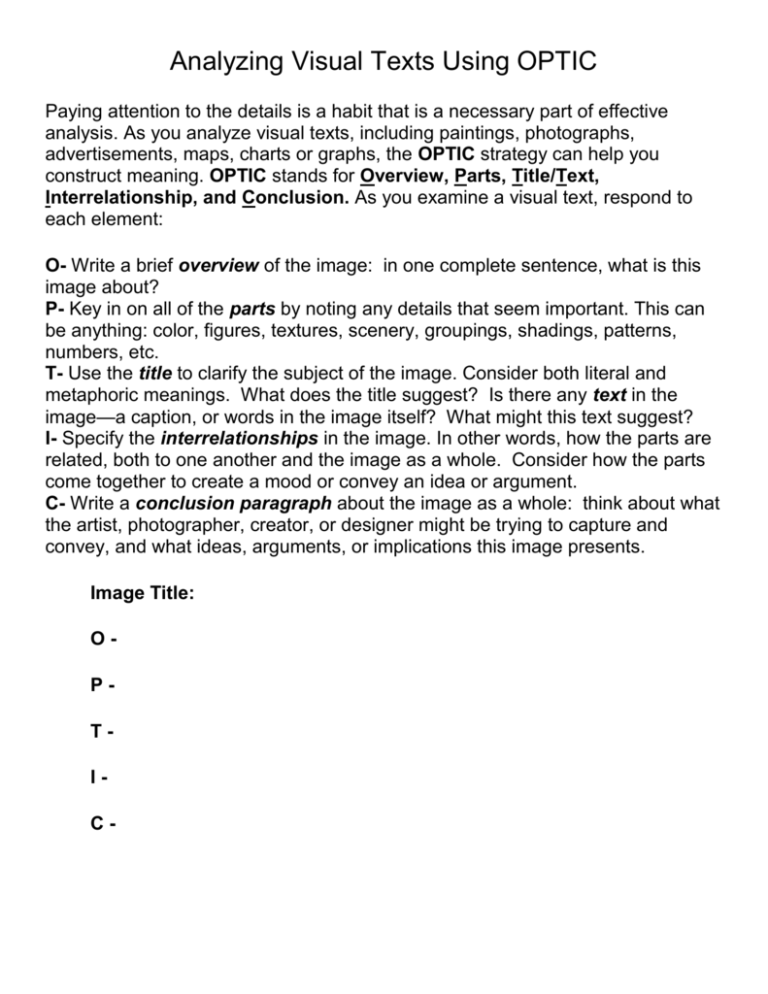
Analyzing Visual Texts Using OPTIC Paying attention to the details is a habit that is a necessary part of effective analysis. As you analyze visual texts, including paintings, photographs, advertisements, maps, charts or graphs, the OPTIC strategy can help you construct meaning. OPTIC stands for Overview, Parts, Title/Text, Interrelationship, and Conclusion. As you examine a visual text, respond to each element: O- Write a brief overview of the image: in one complete sentence, what is this image about? P- Key in on all of the parts by noting any details that seem important. This can be anything: color, figures, textures, scenery, groupings, shadings, patterns, numbers, etc. T- Use the title to clarify the subject of the image. Consider both literal and metaphoric meanings. What does the title suggest? Is there any text in the image—a caption, or words in the image itself? What might this text suggest? I- Specify the interrelationships in the image. In other words, how the parts are related, both to one another and the image as a whole. Consider how the parts come together to create a mood or convey an idea or argument. C- Write a conclusion paragraph about the image as a whole: think about what the artist, photographer, creator, or designer might be trying to capture and convey, and what ideas, arguments, or implications this image presents. Image Title: OPTIC-
